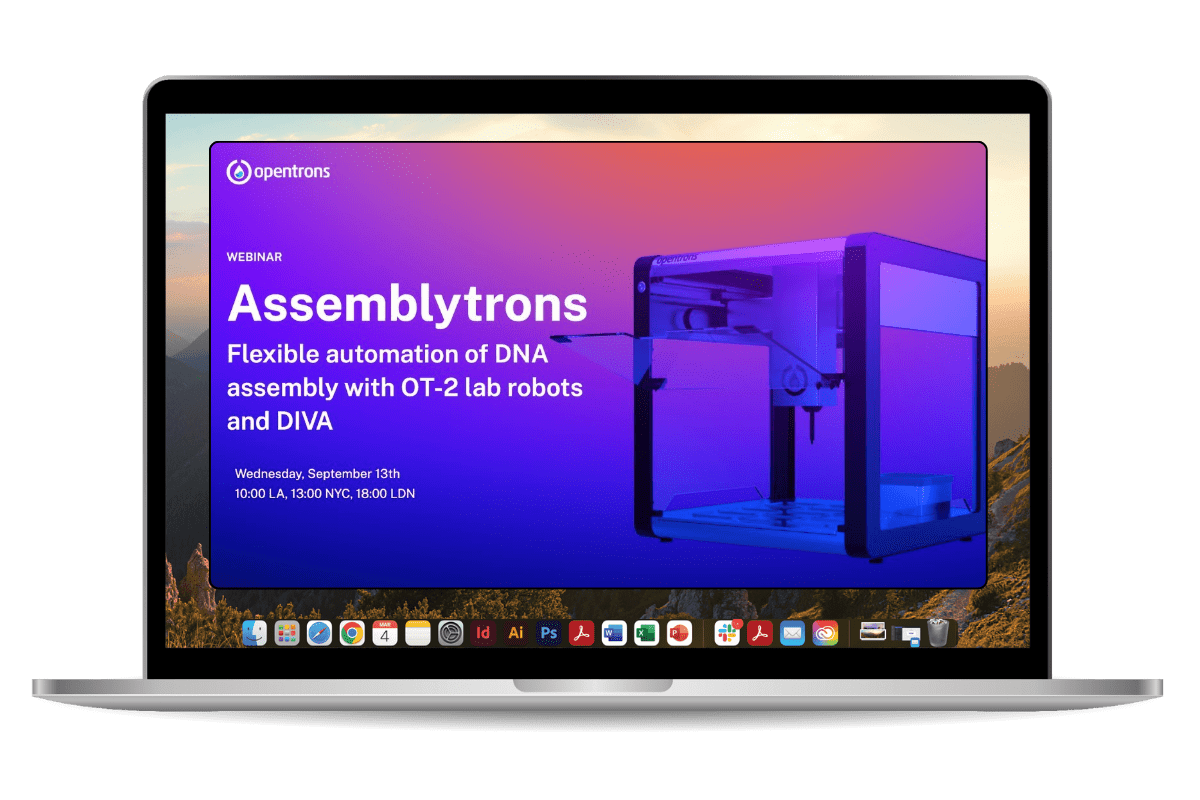
Golden Gate Assembly is a molecular biology technique that allows the precise and seamless assembly of multiple DNA fragments into a desired sequence in a single reaction. It uses type IIs restriction enzymes (e.g., BsaI or BsmBI) to create overhangs that are complementary to adjacent fragments, allowing them to be ligated together without leaving any unwanted sequences.
Automating DNA assembly is becoming increasingly important in synthetic biology as labs seek to streamline the Design-Build-Test-Learn (DBTL) cycle. Traditionally, the “build” step, which involves assembling DNA fragments into desired sequences, is slow, manual, and prone to error, limiting the efficiency and scalability of research. This allows labs to perform high-throughput tasks more efficiently and with greater precision, accelerating advancements in synthetic biology.
Automation in DNA assembly also addresses bottlenecks that impede progress in areas like gene circuit design and metabolic pathway engineering. With tools that automate the build step, labs can more easily design, assemble, and test complex genetic constructs at a fraction of the time and cost required by manual methods. This is crucial for expanding the field of synthetic biology, making it more accessible to smaller labs, and enabling large-scale, iterative biological research and innovation.

Molecular cloning remains a manual, low throughput and unreliable process in most cases and limits our ability to advance the science and engineering of biology. Here, we present AssemblyTron, an open-source Python package to integrate DNA assembly design outputs with build implementation in Opentrons liquid handling robotics with minimal human intervention.
Golden Gate Assembly is used in workflows where multiple DNA fragments need to be assembled efficiently and with precision. These include:
Golden Gate Assembly can be challenging because of the precision and specificity required at each step. Some of the difficulties include:
AssemblyTrons is an open-source Python package designed to integrate j5 DNA assembly software with Opentrons liquid-handling robots, automating the DNA assembly process with minimal human intervention. By using AssemblyTrons, labs can perform tasks like polymerase chain reactions (PCR) and Golden Gate Assembly efficiently and accurately. It calculates optimal conditions, such as annealing temperatures, and handles multiple DNA fragments simultaneously, improving the precision and reliability of DNA builds.
This automation streamlines the process of assembling complex DNA sequences, such as chromoprotein reporter plasmids, and allows for high-throughput experiments. AssemblyTrons delivers results comparable to manual assembly methods, while reducing time, training requirements, and costs.
The OT-2 is a bench-top liquid handler designed to be accessible and flexible enough to automate many common applications.
Our team of experts can help figure out if automation is right for you. Book a virtual demo to discuss your workflow needs with an expert.